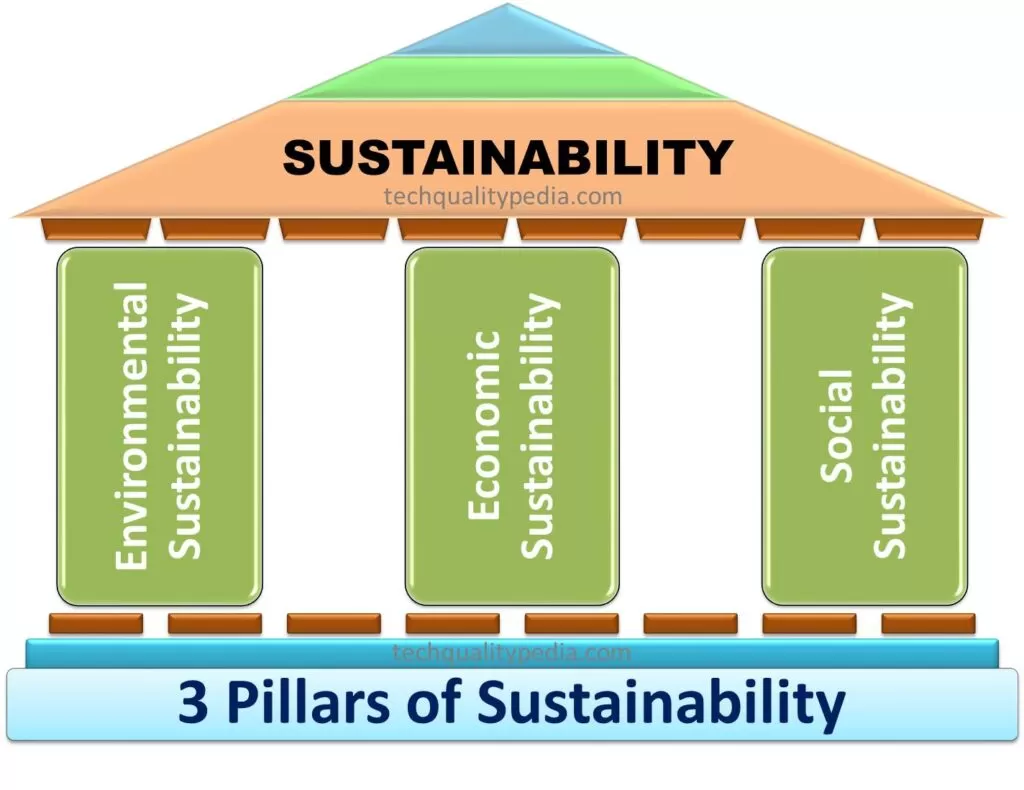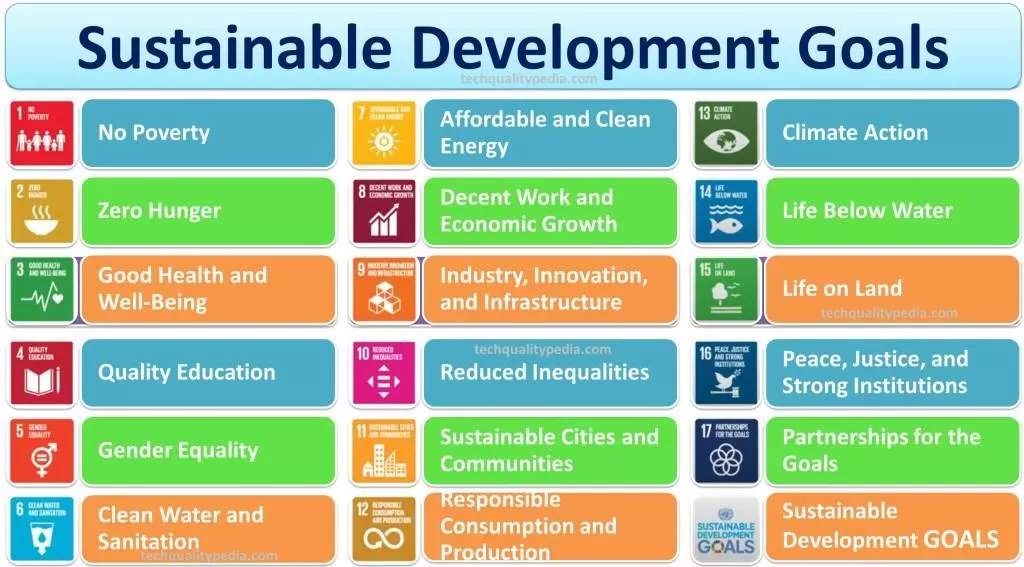Table of Contents
Introduction
Sustainability is a fundamental approach to ensuring long-term success and responsibility within organizations. But what does sustainability mean in the corporate world, and why is it so crucial? In today’s growing world, organizations of all sizes need to understand the importance of sustainability and know how to implement sustainability practices effectively. In this article, we will explore the concept of sustainability knowledge, how to develop and implement Sustainability 3 Pillars within an organization, and the necessary steps required to ensure its success.
Sustainability Definition
Sustainability is defined as “the ability to preserve or improve the social, environmental, or economic systems over the long term without depleting the available resources or opportunities for future generations”.
Sustainability Development Goal
The sustainable development goal is to maintain the viability and availability of the earth’s resources for future generations by maintaining a balance between present needs and the long-term health of the environment, economy, and society.
Sustainability Meaning | Concept of Sustainability in Organizations
Sustainability in organizations refers to the ability to operate in such a way that meets the current needs without affecting or sacrificing the ability of future generations to satisfy their own needs. It is the process of integrating social, economic, and environmental factors or considerations into business operations to generate long-term value.
Sustainability 3 Pillars
Three main pillars form the foundation of sustainability: social, economic, and environmental sustainability. These are commonly referred to as the three P’s: People, Planet, and Profit or triple bottom line.

The three pillars of sustainability are interconnected. For example, promoting renewable energy (environmental) often leads to new jobs in green industries (economic) and healthier communities due to less pollution (social).
Let’s study the Sustainability 3 Pillars in more detail with real-world examples.
Environmental Sustainability
Environmental sustainability focuses on the optimal utilization or use of natural resources to prevent their degradation or depletion. This involves protecting biodiversity, reducing pollution, and promoting the health of ecosystems. The idea is to make sure that we do not consume or utilize resources faster than they can be replenished.
Sustainability Examples | Environmental
- Reforestation
- Renewable Energy
- Sustainable Agriculture
Reforestation
Planting new trees to replace the ones that have been cut down helps restore ecosystems and sequester carbon dioxide. India’s “Green India Mission,” which aims to protect biodiversity and enhance forest cover, is a well-known example.
Renewable Energy
The use of renewable energy sources like solar, wind, and hydroelectric power reduces dependency on fossil fuels (like coal and oil) which are contributing to climate change.
Sustainable Agriculture
Crop rotation, less pesticide use, and organic farming are a few examples of agricultural practices that can be managed to maintain soil health, lower pollution levels, and ensure long-term food security. One excellent example is a permaculture farm, which grows a variety of crops in a manner that mimics natural ecosystems.
Economic Sustainability
Practices that promote long-term economic growth without negatively affecting the environment or social well-being are referred to as economic sustainability. It requires generating wealth and economic opportunities while ensuring that future generations can enjoy similar or better standards of living.
Sustainability Examples | Economic
- Circular Economy
- Green Investments
- Sustainable Tourism
Circular Economy
In a circular economy, waste is reduced by reusing, recycling, or repurposing goods/materials, thereby lowering the consumption of finite resources. Businesses that support a circular economy include Patagonia, which encourages customers to repair their old clothes instead of purchasing new ones.
Sustainable Tourism
Certain regions encourage tourism in a way that preserves the environment and supports the local communities economically. For instance, Costa Rica has emerged as a leader in the world of ecotourism, delivering nature-based travel experiences that both preserve the country’s rainforests and provide income for local people living there.
Green Investments
Investing in sustainable businesses or green technologies can provide long-term economic or financial gains and environmental benefits. The emergence of green bonds, investments tied to projects with environmental benefits is an example of how finance can support sustainability.
Social Sustainability
The goal of Social sustainability is to maintain and improve societal well-being, ensuring that people live in healthy, just, and equitable societies. This includes promoting human rights, ensuring that everyone has access to basic needs like food, water, healthcare, and education, and building resilience within communities.
Sustainability Examples | Social
- Fair Trade Practices
- Social Enterprises
- Affordable Housing
Fair Trade Practices
Supporting fair trade means ensuring that producers in developing countries get fair wages and work in a safe environment.
Social Enterprises
Businesses that aim to solve social problems or improve the well-being of marginalized groups, while being financially viable, are key to social sustainability. For example, TOMS Shoes operates on a “one-for-one” model, donating a pair of shoes to a child in need for every pair purchased.
Affordable Housing
Initiatives like Habitat for Humanity work towards providing affordable, sustainable housing to low-income families, ensuring safe living conditions, and helping to reduce social inequality.
Sustainability Examples
As we know the Sustainability 3 Pillars are interconnected. Tesla is a well-known example of this interconnection contributing to all three sustainability pillars.
- Environmentally: Tesla’s electric vehicles reduce reliance on fossil fuels and cut down emissions.
- Economically: The company is driving growth in the electric vehicle market, creating jobs in manufacturing and technology.
- Socially: By pushing forward cleaner technology, Tesla is contributing to a future with fewer health problems related to air pollution, benefiting society as a whole.
The Importance of Sustainability
Sustainability is not just about protecting the environment but also about ensuring long-term economic growth and social well-being. The world faces numerous challenges, such as climate change, overpopulation, resource depletion, and social inequality. Without sustainability, future generations could face poorer standards of living, fewer resources, and significant environmental degradation.
Why Sustainability Matters:
- Combatting Climate Change: Sustainability practices, such as reducing greenhouse gas emissions, are crucial in slowing down climate change and its devastating effects on weather patterns, sea levels, and global ecosystems.
- Ensuring Resource Availability: Non-renewable resources like fossil fuels and fresh water are finite. Sustainability ensures these resources are used wisely so future generations have access to them.
- Promoting Equality: By addressing economic disparities and ensuring fair access to resources, sustainability helps reduce inequalities within and between countries.
Benefits of Sustainability for Businesses
Adopting sustainability practices offers various benefits that include:
- Improved brand reputation
- Increased competitiveness in the marketplace
- Enhanced operational efficiency
- Reduced costs through waste minimization
- Compliance with regulations
Sustainable Development Goals (SDGs)
There are 17 Sustainable Development Goals (SDGs) that aim to address some of the world’s most pressing challenges, including poverty, inequality, environmental degradation, and climate change while promoting peace, justice, and economic growth.

Here is the list of the 17 SDGs:
- No Poverty
- Zero Hunger
- Good Health and Well-Being
- Quality Education
- Gender Equality
- Clean Water and Sanitation
- Affordable and Clean Energy
- Decent Work and Economic Growth
- Industry, Innovation, and Infrastructure
- Reduced Inequalities
- Sustainable Cities and Communities
- Responsible Consumption and Production
- Climate Action
- Life Below Water
- Life on Land
- Peace, Justice, and Strong Institutions
- Partnerships for the Goals
Conclusion
Sustainability is an essential framework for addressing the challenges facing the world today, encompassing environmental, economic, and social aspects. It is up to us to act responsibly and wisely now to ensure that future generations can enjoy the same, if not better, opportunities. Everyone, from large corporations to individuals, may contribute to promoting sustainability by supporting fair trade, adopting renewable energy, or advocating for policies that protect the environment and its people.
You’ll also like:
- Sustainability Development Goals | Pillars | Examples
- Corporate Social Responsibility CSR | CSR Requirements
- Substance of Concern Management System | SOC Check Sheet
- Substances of very high concern reach | SOC
- Environmental Management System EMS | ISO 14001 standard
- Time Management | Self Discipline
